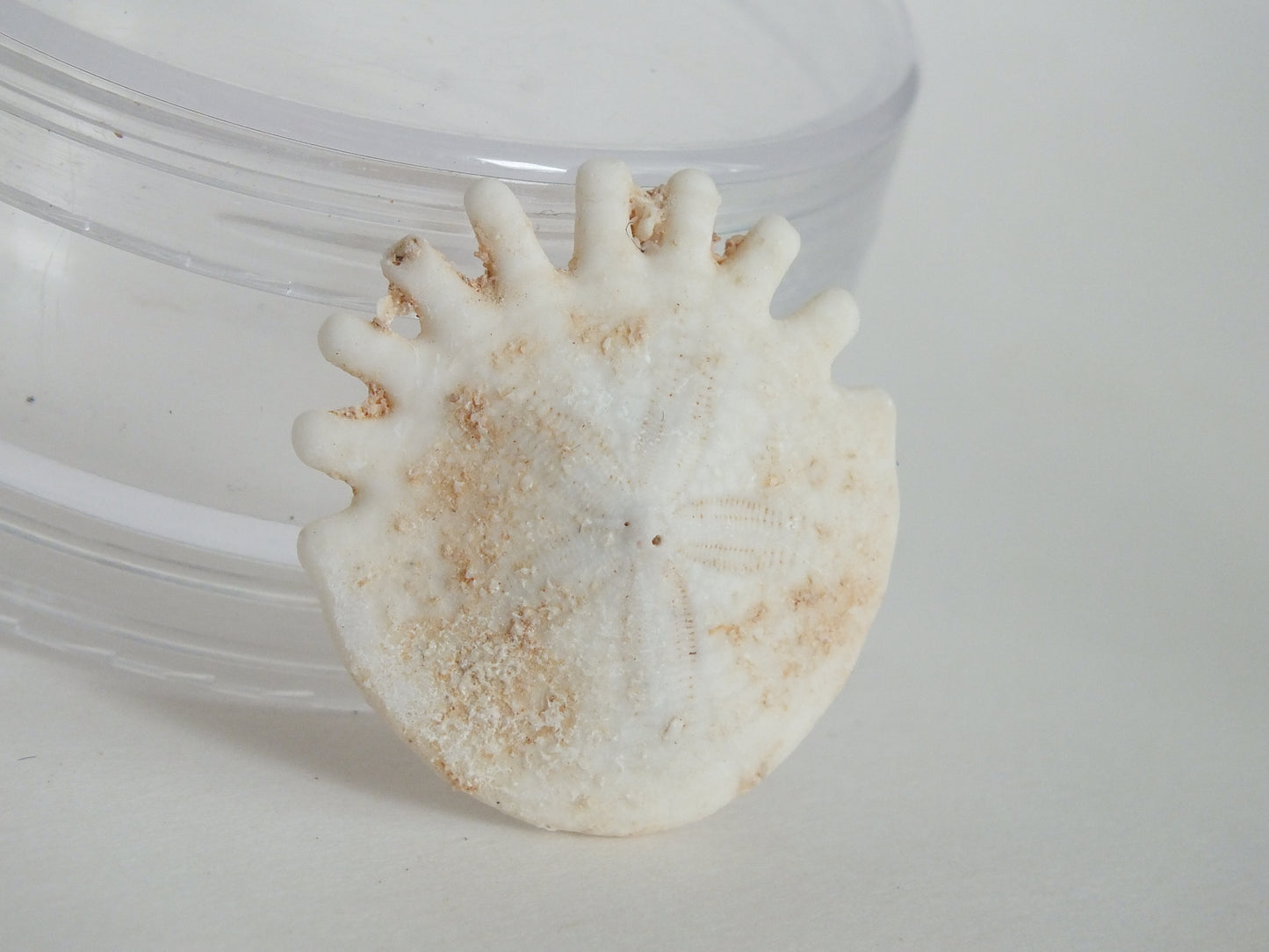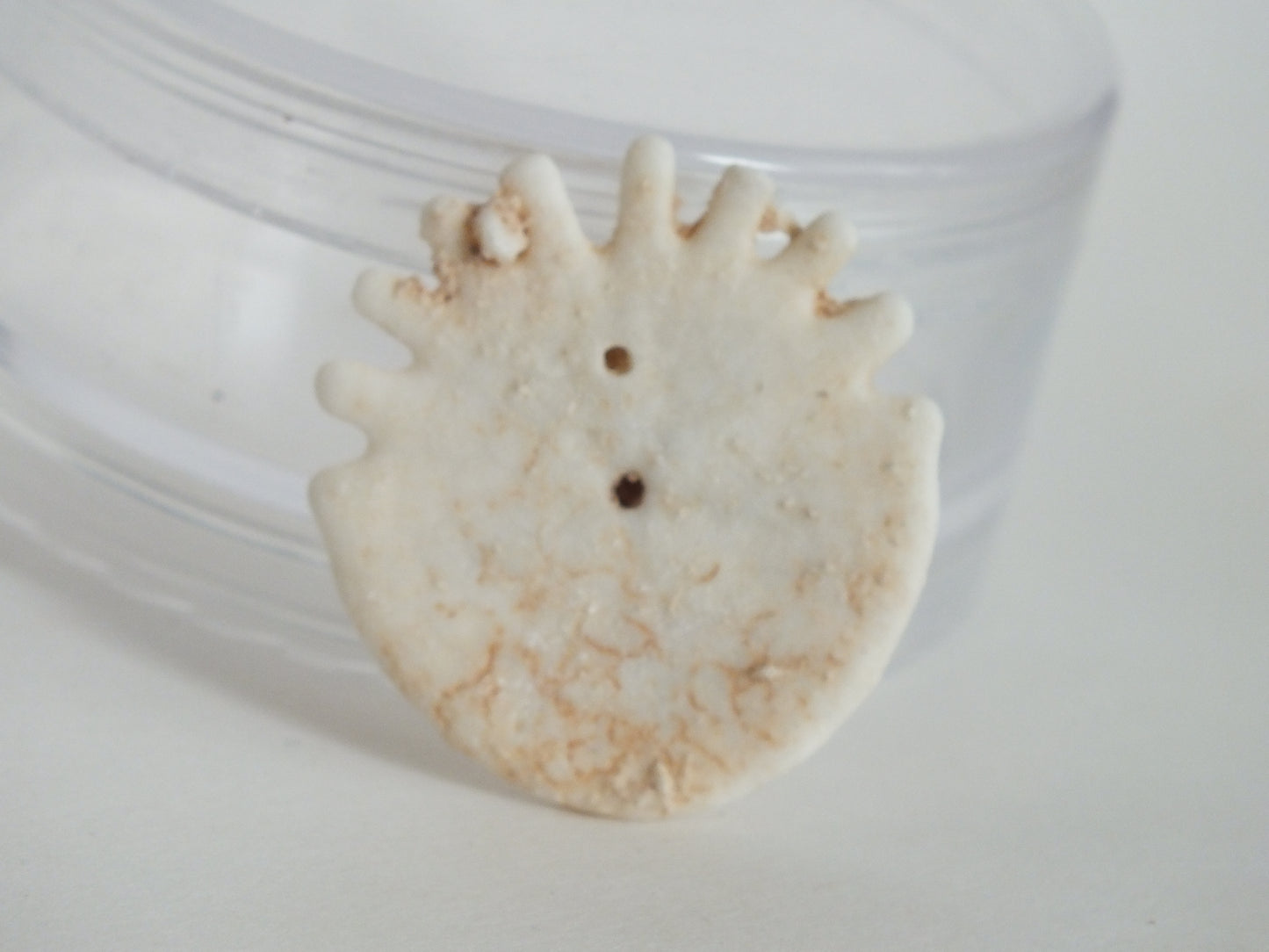Stonesandbones
Fossil Sand Dollar (Heliophora) - Morocco
Fossil Sand Dollar (Heliophora) - Morocco
Regular price
$15.00 CAD
Regular price
Sale price
$15.00 CAD
Unit price
per
Couldn't load pickup availability
Heliophora is a genus of small sand dollars belonging to the family Rotulidae. The genus has distinctive indentations along the edge of the test (body), but the extent and depth of these can vary remarkably between individual specimens. In the case of these specimens the indentations are very pronounced.
A sand dollar is a highly flattened form of urchin of the order Clypeasteroida. As an echinoderm, they have a pentameral (five-fold) symmetry to their body organization, a water vascular system, and an endoskeleton made of calcite plates. They live in shallow marine environments just below the low tide line, buried in the sand or mud. They range up to about 4 inches (10cm) in diameter. Most are about a third (7mm) to half (12mm) an inch thick, but some are over an inch thick. They are basically circular in shape, though some have flattened or indented sides. While alive, they are covered with velvety-looking spines that they use to move, much like other echinoderms. The most diagnostic indicator of fossil sand dollars is the five ovate form on the top side of the skeleton. These are part of the respiratory system and leave an easily identified “flower” on the skeleton. They are active predators, feeding on crustacean larvae, small copepods, diatoms, and algae.
Sand dollars first appeared in the Paleocene, about 60 million years ago. By the middle Eocene, they had populated every ocean. As an order, sand dollars are still robust today: 49 genera of sand dollars are extinct, but 29 are still living.
Sand dollars first appeared in the Paleocene, about 60 million years ago. By the middle Eocene, they had populated every ocean. As an order, sand dollars are still robust today: 49 genera of sand dollars are extinct, but 29 are still living.




